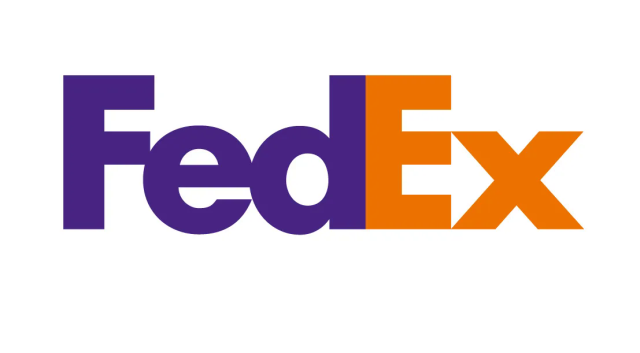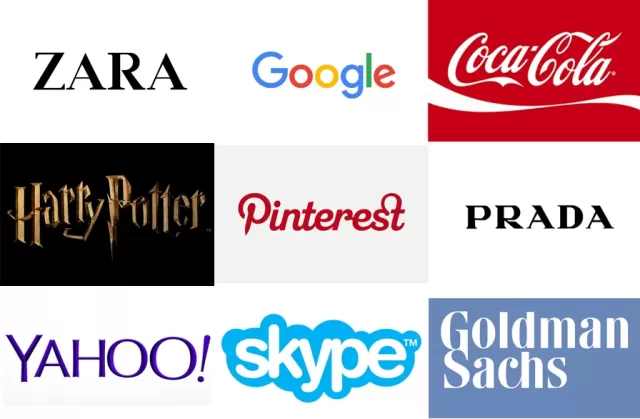How do you create an effective logo? What are the steps to designing a logo that works?

In this article, I want to provide answers to these questions and share my knowledge about the art of creating corporate identities. If you're a graphic designer like me, constantly looking for ways to improve your skills, then you're in the right place.
So, are you ready to start your journey?
But before we dive in, you might ask yourself, "Why should I listen to your advice?"
Why should you read this guide? Probably because it's the most comprehensive guide on how to design a logo that you can find online, even in English, I hope.
My name is Umberto Mazza, and for over 20 years, I've been involved in web design, graphics, advertising, communication, and marketing. In the last sixteen years, I've held the role of Creative Director and Art Director.
Logo design is my specialty. It's my passion and, dare I say, my best skill.
And now, I will share everything I know about logo design and how to create an effective logo.
Between 2000 and 2001, I started exploring the world of branding and was fascinated by what can be encapsulated in a simple symbol. A stylized bitten apple can tell a story, seemingly ordinary text can contain hidden elements, and a shape can represent much more than it seems. So, I discovered the world of symbols and logos, and I was captivated by it.
This journey introduced me to a vast universe of knowledge that I never stopped exploring. I've learned a lot over the years, experimented, and worked on numerous corporate identities. In this comprehensive guide, I'll share the most important concepts about creating a logo.
But before we begin, I want to tell you one of the first lessons I learned:
Anyone can create a logo, but not everyone can create the right logo.
So, I know, we shouldn't say these things out loud. Clients might stop giving us work! But it's the truth. Creating a logo is relatively easy. All you need is a pencil and a piece of paper, or even better, software like Illustrator.
But here's the point: creating the right logo is an entirely different art. It's not just about making a "nice shape" that looks great on a business card or a company's Facebook page. What a designer does is synthesize everything that logo should represent.

A logo is like the tip of an iceberg. The visible part of an iceberg is only a small fraction of its overall size. This concept also applies to the relationship between the logo and branding. The logo represents the visible part of the iceberg, while the brand is the entire iceberg. The logo summarizes the essence of the brand concisely, telling its vast story succinctly. If the logo is not visible enough, the brand becomes invisible. Therefore, the logo must be effective and represent the brand in the right way.
But how do you create an effective logo?
This is the most challenging part to explain. The effectiveness of a logo is not easily measurable with numbers. There's no 1 to 10 scale to determine if IBM's logo is more effective than Marvel Comics' logo.
The effectiveness of a logo depends on its ability to express the essence and soul of the company. If it can do that, it's an effective logo; otherwise, it's not. If it only partially succeeds, it's only partially effective.
Good design can certainly achieve the goals set in the design brief, but creating a truly iconic logo is another challenge. It must be simple, appropriate, distinctive, enduring, memorable, and adaptable.
Remember that in any field, you need to know the rules well before you can break, circumvent, or surpass them. The same goes for logo design.
Now let's look at the characteristics an effective logo should have.
1. A logo must be simple (but not banal)
Simplicity in creating a logo makes it possible to achieve a design that is easily recognizable and identifiable. In a logo, every element should have a specific meaning and function. Superfluous decorative elements like ornaments, arrows, circles, or lines that serve no purpose in the design should not be included.
An excellent example of exceptional simplicity is the FedEx logo, created by Lindon Leader in 1994. Not only is the name abbreviated for simplicity, but the logo also hides a brilliant element: an arrow underscores the speed of FedEx deliveries. Effective simplicity is often the leitmotif in logo design.

2. A good logo must be appropriate
An effective logo must be suitable for the audience with which the company will interact and must be consistent with what the company wants to communicate and offer. If you are designing a logo for a lawyer, a "fun" design may not be appropriate. Similarly, a vegan restaurant should avoid depictions of meat and chicken in its logos.
3. A logo must tell a story
A good logo should not only be "cute" but should also be able to tell a story effectively. A logo that tells a story has a distinctive advantage over a banal one. The ability to tell a story effectively is a fascinating aspect of logo design.
In its simplicity, the Amazon logo, for example, tells a story: the arrow in the logo goes from "a" to "z." In other words, on Amazon, you can find everything from "a" to "z." Simple, effective, and with a representative story behind it.

4. It must be versatile and adaptable
A logo must be versatile and adaptable to different shapes and surfaces, whether on a small scale, like business cards, or on a large scale, like posters, 6x3 billboards, or banners. Logo design must consider all possible applications to ensure that the logo is effective in every context.
5. It must stand out
The logo must be recognizable and easily distinguishable from competitors. It can do this through a unique style, effective shapes, a compelling story, color, or even the brand's name. Distinction is essential for logo identification.
A logo can also differentiate itself through intelligent use of colors, fonts, packaging, corporate image design, and the website. Distinction is crucial for standing out and establishing a presence in the market.
The Logo Design Process: The Importance of Having a Creative Process
Creating a logo is an art that cannot be fully explained in a single article. No article can convey the experience and sensitivity required to become a true logo designer. If you want to delve deeper, I invite you to take a look at our free 7-lesson mini-course on Logo-Hero, so you can get a taste of how extensive and interesting the subject is.
Now, let's focus on the creative process of logo design. Designing a logo is not simply opening Illustrator and starting to draw without a well-defined purpose. Creating an effective logo requires a structured creative process.
It's important to emphasize that there is no single standard creative process for all logo projects. Each project has its own requirements and requires a different approach. The key is adaptability.
Here are the main stages in the logo design process, which I promise to discuss in more detail in upcoming articles:
[Stage 1] - Design brief
The initial stage involves gathering information from the client through the design brief. This phase is crucial to understanding the client's needs and defining the project's goals.
[Stage 2] - Brainstorming and research
After understanding the client's needs, the brainstorming and research phase begins. Here, you need to collect ideas, keywords, and relevant images that will inspire your creative process.
[Stage 3] - Sketching
Sketching, or hand drawing, is the most important phase in the creative process. It is through sketching that the best ideas and concepts emerge. Do not underestimate it, even though it may seem like an "analog" step in a digital world.
[Stage 4] - Vector construction
After selecting a winning concept from sketching, you move on to the vector construction phase. Using software like Adobe Illustrator, you transform the concept into a digital logo and refine the details.
[Stage 5] - Font and color selection
The choice of font and colors is crucial. The font should align with the logo's message, while colors should evoke the desired emotions. Each color conveys different feelings and should be chosen carefully.
[Stage 6] - Presentation and delivery of work
Client presentation is often underestimated but essential. Explain the creative process, font and color choices, and possible logo applications. Use mockups to make the logo more realistic.
[Stage 7] - Corporate image construction
If necessary, the construction of the corporate image integrates the logo into all branding elements, such as business cards, letterheads, web templates, and more.
Remember that a logo is only the tip of the brand's iceberg. It's the most visible part, but the entire brand is much broader. Building a corporate image helps create a consistent corporate image.
12 Practical Tips for Logo Design
Are you ready for a journey into logo design? I've prepared 12 practical tips on how to create a successful logo.
1. Ask questions without fear
The first step is the design brief, your opportunity to learn everything there is to know about the client and the project. Think of this phase as an interview where there are no wrong questions. The more information you gather, the better the end result will be.
2. Paper is your best friend
Always start the design process with good old paper. This allows your ideas to flow naturally and creatively. Hand drawing is the foundation of a good logo, so do not underestimate it.
3. Start in black and white
Focus on the design without getting distracted by colors. Working in black and white will allow you to focus on shapes and ideas. Colors come later.
4. Avoid passing trends
Graphic trends change, but a good logo should last a long time. Design with a logo that will stand the test of time, not one that will go out of fashion in a few years.
5. Legibility is essential
A logo must be immediately understandable. Observers will only have a few seconds to grasp its message, so make legibility a priority.
6. Test the logo in various sizes
Your logo should work well in any format, from the small favicon on the website to the giant size of a billboard.

7. Collaborate with the client
The client is a valuable resource; listen carefully. They may know their industry better than you, so consider their advice.
8. Do not force the client to make wrong decisions
Despite listening to the client, remember that you are the design professional. Don't settle for saying "it's a nice color"; explain how the color reflects the company's message.
9. A logo does not always need an icon
A logo can be a logotype (text) or a pictogram (icon). Sometimes, a logotype without an icon is the best choice. Do not impose an icon if it's not necessary.

10. Choose the font carefully
The choice of typography is crucial. Make sure the font aligns with the logo's message and the company itself.
11. Deliver files correctly
Delivering files to the client is an important part of the process. Make sure to provide all the necessary formats for optimal logo usage.
12. Pay attention to every detail
Details make the difference. Optical corrections can make your logo exceptional. Give them the attention they deserve.
Now you have all the tools to start creating a successful logo. Happy designing!
When you subscribe to the blog, we will send you an e-mail when there are new updates on the site so you wouldn't miss them.
By accepting you will be accessing a service provided by a third-party external to https://www.insightadv.it/


































































Comments